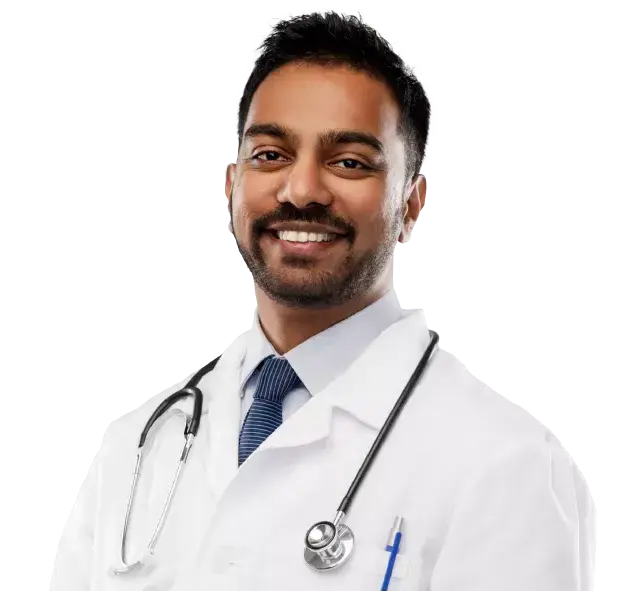
Select City
TURP Surgery in India is a Transurethral Resection Prostate treatment performed by the best urologists in India. Get the most advanced minimal pain treatment of Enlarged prostate at an affordable cost.
TURP Surgery in India is a Transurethral Resection Prostate treatment performed by the ... Read More




Free Consultation

Free Cab Facility

No-Cost EMI

Support in Insurance Claim

1-day Hospitalization

USFDA-Approved Procedure
TURP stands for Transurethral Resection of the Prostate. It is a minimally invasive surgery that helps relieve the symptoms of prostate enlargement. Around 95% of BPH patients get TURP surgery, even with other treatment techniques available.
It is often considered to be the gold standard for BPH treatment, as it provides relief with very low chances of complications at an affordable price. The surgery is performed by removing parts of the prostate through the urethra without any cuts on the body.
The prostate gland is located below the bladder, surrounding the urethra. When it increases in size, it constricts the urethra, leading to urinary problems like difficulty in urination, painful urination, etc. While medicines may be a little effective in the initial stages of the disease, surgery is ultimately the best TURP Surgery option for all patients.

Fill details to get actual cost
Pristyn Care is one of the largest surgery providers in India. It has tie-ups with some of the best hospitals all over India to help provide advanced TURP Surgery to all patients at affordable prices. Additionally, Pristyn Care has a team of expert urologists and general surgeons who are adept at performing TURP surgery without any complications for the patient.
Pristyn Care also provides other auxiliary services to the patient, such as complete insurance and hospital documentation support, easy payment plans like no-cost EMI, etc. It also provides cab facility to the patient for pick up and drop off from the hospital on the day of surgery and complimentary meals during hospitalization.
Diagnosis of prostate enlargement is done via a combination of physical examination and diagnostic tests The prostate doctor will collect your family and medical history to analyze whether you might be at risk of having BPH. Risk factors for BPH include old age, sedentary lifestyle, unhealthy diet, etc.
Diagnostic tests for BPH include:
Other tests that a prostate doctor may perform are transabdominal ultrasound and Prostate magnetic resonance imaging (MRI).
TURP surgery is performed using a resectoscope, a device formed using a narrow tube, a fiber optic camera, a light source, and an electric instrument for resection of the prostate gland. The surgery is performed under either spinal or general anesthesia, based on the patient and surgeon’s preference. It usually takes around 1-2 hours to complete.
The resectoscope is inserted through the urethra to avoid incisions on the body. The light source and camera help guide the electric loop towards the surgery site. Once it is located, the surgeon removes extra tissue from the prostate and cauterizes the surgical site. Then, the resectoscope is removed.
Following this, a catheter is inserted into the urethra. It is used to pump fluid into the bladder and flush out the blood, blood clots, prostate pieces, etc., lodged into the prostate. Once the surgery is done, the patient is moved to a room for postoperative observation and evaluation.
Before the surgery, the patient must thoroughly prepare to avoid complications of the surgery and for the after-effects of the surgery. If you are undergoing TURP, you should make the following preparations before the surgery:
Diet & Lifestyle Consultation
Post-Surgery Follow-Up
Free Cab Facility

24*7 Patient Support
Although TURP surgery is very safe, sometimes it can be associated with complications like:
If you notice any signs of complications like blood or pus in the urine, nausea, dizziness, etc., you should contact your surgeon immediately so they can safely manage them.
TURP Surgery is usually recommended for patients suffering from severe lower urinary tract symptoms (LUTS), which considerably impact their quality of life (life expectancy after TURP surgery). Some conditions for which TURP surgery may be required are:
The benefits of TURP surgery are:
No, while TURP is a major surgery with significant after-effects and possible complications, it is not a high-risk surgery. However, if you have a complication that isn’t properly managed, it can potentially turn fatal.
Yes, the prostate gland does grow even after the TURP Surgery, however, in most cases, the growth is so minimal that it does not have any significant impact on the patient.
Generally, the positive effects of TURP Surgery can easily last for more than 15 years, as prostate growth is negligible during this period.
The prostate gland is an essential gland that forms certain enzymes that are necessary for proper sperm function and semen formation. Thus, unless the patient is suffering from prostate cancer, the surgeon only removes a small part of the gland during TURP surgery, while the remaining gland is left intact.
Most patients regain complete bladder control within 2-3 weeks of the surgery, but in some cases, full recovery can take about 12-18 months.
TURP stands for – Transurethral Resection Prostate.